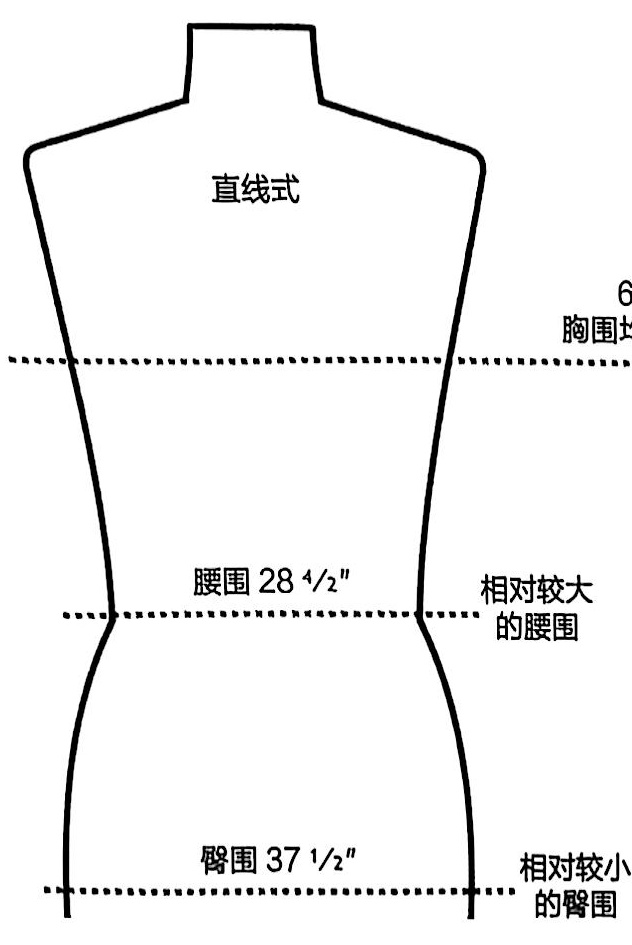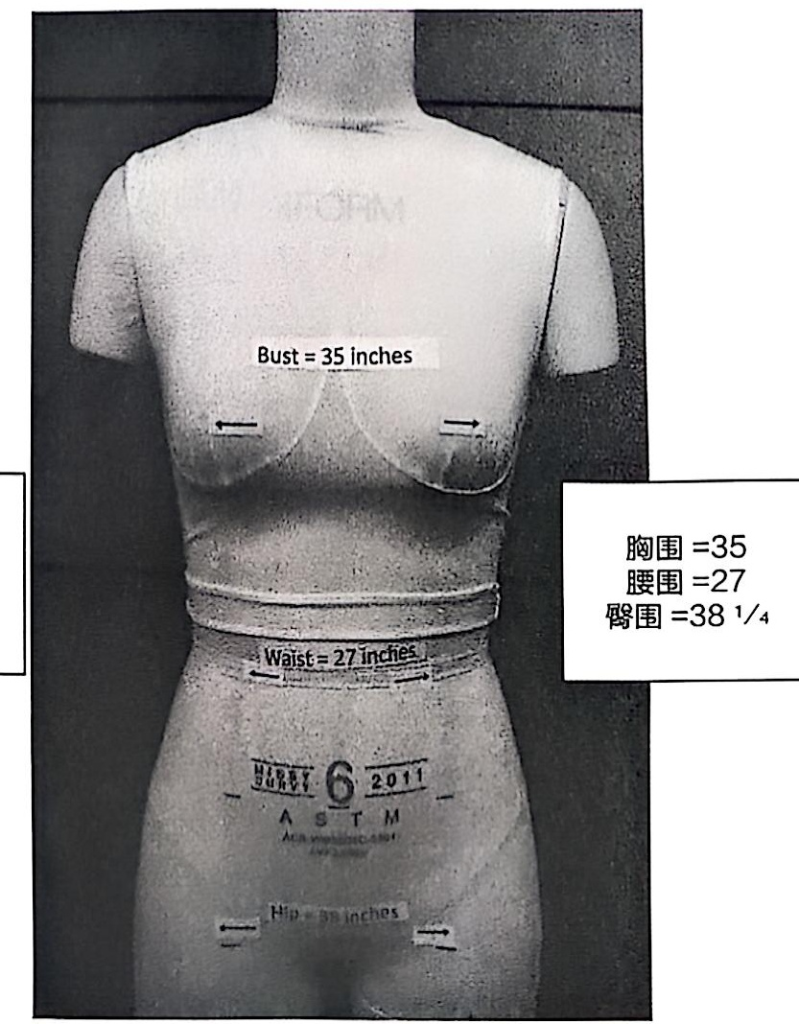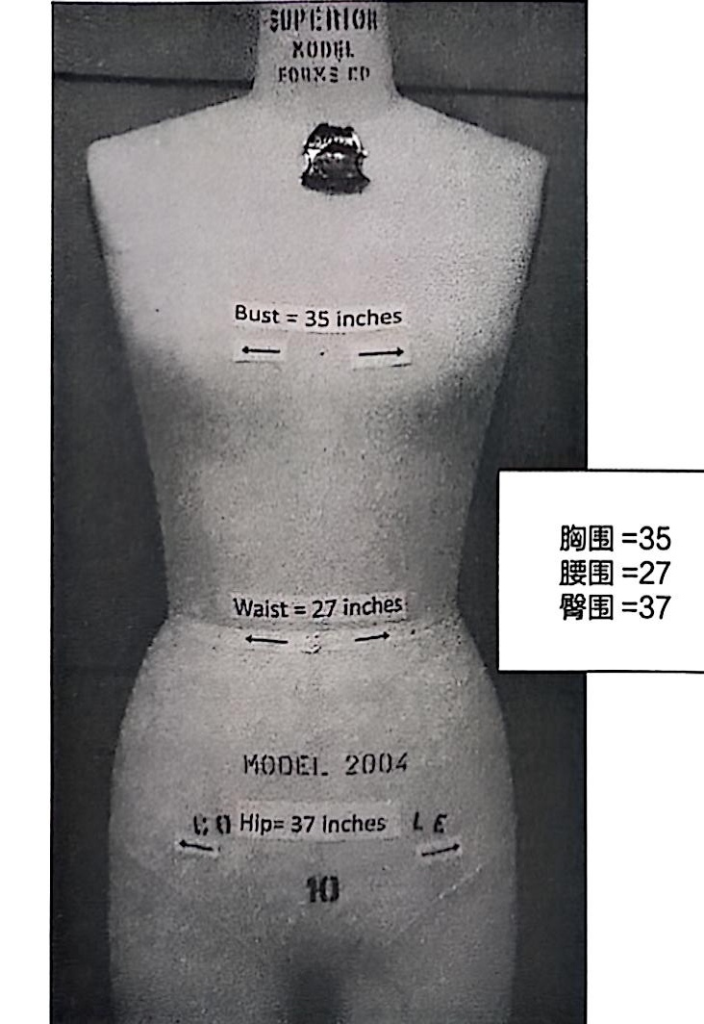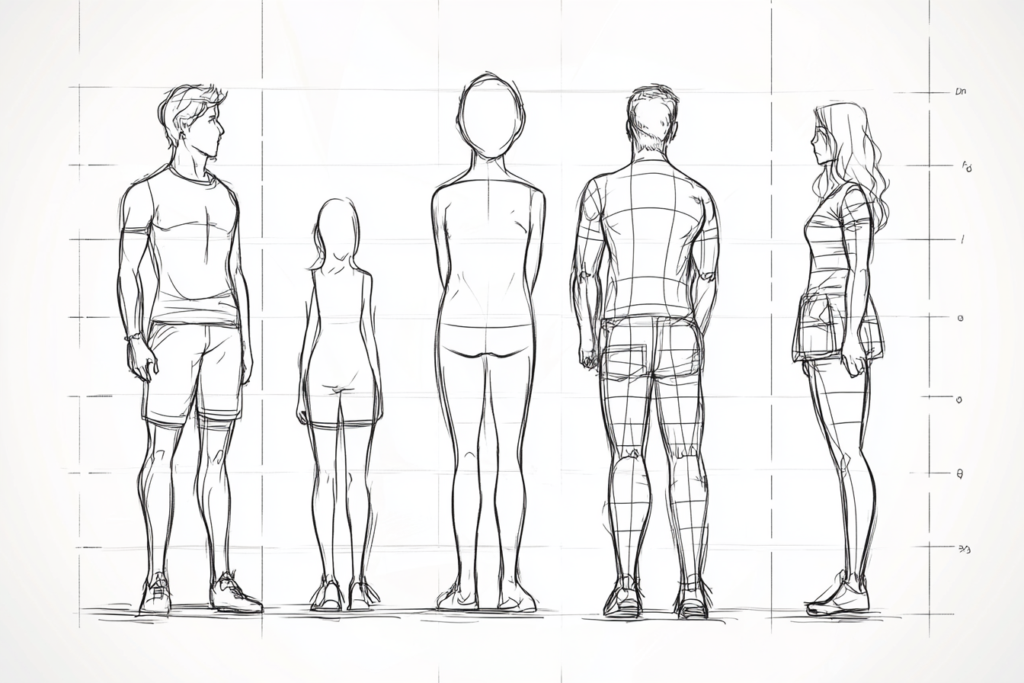Size Charts: Navigating Variations Across Clothing Categories
Clothing size charts vary significantly depending on factors such as gender, height, body type, and age. While some categories are broad, others are more specific or niche. Ideally, size standards should be consistent across the industry, but variations between manufacturers in different categories often lead to differences in sizing requirements.
Girls’ Size Charts
The girls’ clothing category, which encompasses a wide range of silhouettes and sizes, serves as an example of a broadly defined sizing system. Typically, the average height for girls in this category is around 5 feet 6 inches, with sizes ranging from 2 or 4 up to sizes 18 or 20. But what exactly does “size” mean? What does a size 8 correspond to? While different brands may have slight variations in their definitions, the general framework for sizing is the same. Table 15.6 offers a typical girls’ size chart, but due to the lack of standardized regulations, some newer companies may define size 8 differently from others. This flexibility can lead to confusion, but brands must ensure that they can meet their customers’ sizing needs for success.
It’s important to note that size charts represent body measurements rather than the clothing sizes themselves. In girls’ sizes, a common practice is to use a 1-inch spread between sizes. Over the years, girls’ sizing has expanded, meaning that sizes today may differ from those of the past. For example, a size 8 from 20 years ago might be equivalent to a modern size 6. This phenomenon, known as “size inflation,” reflects a broader trend where a size 8 pattern from the 1950s could now be categorized as a size 14. Interestingly, despite the label changes, the body measurements have remained similar. For instance, a mannequin from the 1960s and one from 2010 could have near-identical measurements, but be classified as size 10 and size 6, respectively.
Additionally, the size 10 of the past may have had a bit more padding around the waist and upper hips, while the current size 6 has a smoother shape and slightly smaller hip measurements. However, despite these changes, the overall proportions of the body have remained quite similar. This phenomenon highlights how sizing conventions have evolved while maintaining general body proportion standards.
The Shift in Clothing Proportions
Historically, clothing was designed with idealized standard proportions in mind. In recent years, Alvanon, a leading expert in the field, has utilized research from ASTM International to better capture real-world body shapes. Through this research, two primary fit categories—straight and curved—have emerged, reflecting the differences in waist and hip measurements across the female population. The mannequins used in this research are more representative of the variation in body shapes, especially when it comes to hip and waist measurements.
Over time, women’s bodies have changed, and so have the ways we define body shapes. Different ethnic populations may have distinct shape characteristics, prompting jeans manufacturers to account for these variations in their sizing. By collecting data that reflects changes in body size with age, clothing companies are better equipped to improve their size charts and meet the diverse needs of their customers.




Sample Sizes and Clothing Category Breakdown
All clothing companies select a sample size for product development or prototype production. Typically, the sample size chosen is close to the middle of the target size range, providing the most accurate cost and sizing information. However, in many cases, smaller sizes are chosen to make the sample more appealing to potential buyers, as the sample (usually displayed on a hanger) may fit more closely with the typical buyer’s body.
Girls’ Size Charts
Girls’ clothing ranges from sizes 2 to 18, with size 10 being the middle size. However, sample production often uses sizes like 8 or 6 for broader appeal. Although there is no official regulation, size charts in the industry are generally agreed upon, and companies tend to adopt similar sizes to stay competitive.
Size charts for girls typically use a 1-inch spread between sizes, and it’s essential to note that sizing has shifted over the years. For example, a size 8 from 20 years ago may now equate to a modern size 6 due to size inflation. This phenomenon reflects a trend where clothing from different eras with the same body measurements may be classified differently in terms of size. For example, a size 8 from the 1950s would correspond to a size 14 today.
Here is a Girls’ Size Chart , showing the size range from 2 to 18, the historical size shift, and the typical 1-inch spread between sizes.
| Size | Chest (inches) | Waist (inches) | Hip (inches) | Modern Equivalent (Size Inflation) |
|---|---|---|---|---|
| 2 | 20-21 | 19-20 | 21-22 | – |
| 4 | 22-23 | 20-21 | 22-23 | – |
| 6 | 24-25 | 21-22 | 23-24 | Size 8 (from 20 years ago) |
| 8 | 26-27 | 22-23 | 24-25 | Size 10 (from 20 years ago) |
| 10 | 28-29 | 23-24 | 25-26 | – |
| 12 | 30-31 | 24-25 | 26-27 | Size 14 (from 20 years ago) |
| 14 | 32-33 | 25-26 | 27-28 | – |
| 16 | 34-35 | 26-27 | 28-29 | – |
| 18 | 36-37 | 27-28 | 29-30 | – |
Notes:
- Size Inflation: Size 8 from 20 years ago corresponds to size 6 today. Similarly, a size 8 from the 1950s would correspond to a modern size 14.
- Spread Between Sizes: Girls’ sizes typically have a 1-inch spread in measurements between sizes.
This chart reflects how sizing in girls’ clothing has evolved over time due to changes in body proportions and the industry’s practice of adjusting size labels.
Women’s Sizing Evolution
Women’s sizing charts have also evolved over time. Companies often follow industry standards but may offer unique adjustments for fit, such as the use of letter sizes (XS, S, M, L) for general measurements. Each size category, such as medium (M) or large (L), can encompass a range of measurements, and this can be confusing for consumers. For example, medium might be too small for some customers and large might be too big for others, especially in items like jeans or trousers made from thicker fabrics.
Women’s clothing is also designed around various body shapes, including hourglass, pear, and inverted triangle silhouettes. With the evolving understanding of body types, clothing companies are better able to meet the needs of consumers by adjusting size charts to accommodate more diverse figures.
Small Size Chart
Small sizes are generally designed for women who are approximately 4’11” to 5’1” (150-155 cm). These sizes differ mainly in inseam and sleeve length compared to other body sizes. Small sizes are slightly smaller than typical girls’ sizes, with a waist-to-hip and waist-to-bust difference that matches those of girls’ sizes. Petite sizes are important for retailers, as about half of women are shorter than 5’4” (162.6 cm), and petite clothing typically features shorter inseams and crotch lengths.
| Size | Chest (inches) | Waist (inches) | Hip (inches) | Height Range | Inseam (inches) | Fit Type/Body Shape |
|---|---|---|---|---|---|---|
| XS | 30-32 | 23-25 | 33-35 | 4’11” to 5’1″ | 28-30 | Small body frame (Petite) |
| S | 32-34 | 25-27 | 35-37 | 5’1″ to 5’3″ | 29-31 | Hourglass, Pear |
| M | 34-36 | 27-29 | 37-39 | 5’3″ to 5’5″ | 30-32 | Hourglass, Pear, Inverted Triangle |
| L | 36-38 | 29-31 | 39-41 | 5’5″ to 5’7″ | 31-33 | Hourglass, Pear, Inverted Triangle |
| XL | 38-40 | 31-33 | 41-43 | 5’7″ to 5’9″ | 32-34 | Hourglass, Inverted Triangle |
| Plus-Size | 40+ | 33+ | 43+ | 5’7″ to 5’9″ | 32-34 | Varies by body shape |
Large Size Chart
Large sizes are designed for women taller than 5’7” (170 cm) and are often denoted with a “T” after the size, such as 16T or 18T. Large sizes cater to women with more height and slightly broader body dimensions. Plus-size clothing, which has a smaller market, is typically sold as an add-on garment in a limited range of styles. Plus-size pants typically have longer inseams and slightly more space in the waist and hips compared to standard sizes.
| Size | Chest (inches) | Waist (inches) | Hip (inches) | Height Range | Inseam (inches) | Fit Type/Body Shape | Notes |
|---|---|---|---|---|---|---|---|
| 16T | 38-40 | 31-33 | 41-43 | 5’7″ to 5’9″ | 32-34 | Tall body frame | Larger size for women over 5’7″, denoted with “T” |
| 18T | 40-42 | 33-35 | 43-45 | 5’7″ to 5’9″ | 33-35 | Tall body frame | Longer inseams, slightly more space in waist and hips |
| 20T | 42-44 | 35-37 | 45-47 | 5’7″ to 5’9″ | 34-36 | Tall body frame | Larger sizes for taller women, wider hips |
| 22T | 44-46 | 37-39 | 47-49 | 5’7″ to 5’9″ | 35-37 | Tall body frame | Extended range for tall sizes with wider proportions |
| 24T | 46-48 | 39-41 | 49-51 | 5’7″ to 5’9″ | 36-38 | Tall body frame | For taller women with more generous fit |
Plus-Size Size Chart
The plus-size market is expanding, and sizing for plus-size women has specific charts. Plus-size ranges typically have 4-inch increments between adjacent sizes in letter size charts, while numeric size charts tend to have 2-inch increments. As more companies design for plus-size customers, it’s important to consider the body type and shape differences, as these women often have varying silhouettes (e.g., hourglass, pear, inverted triangle).
| Size | Chest (inches) | Waist (inches) | Hip (inches) | Body Type | Height Range | Notes |
|---|---|---|---|---|---|---|
| 1X | 40-42 | 34-36 | 42-44 | Hourglass, Pear, H | 5’3″ to 5’7″ | Smaller range within plus-size; accommodates hourglass or pear shapes |
| 2X | 42-44 | 36-38 | 44-46 | Hourglass, Pear, H | 5’3″ to 5’7″ | Slightly larger range; common for inverted triangle and hourglass |
| 3X | 44-46 | 38-40 | 46-48 | Hourglass, Pear, Inverted Triangle | 5’4″ to 5’8″ | Fits wider silhouettes like inverted triangle and pear |
| 4X | 46-48 | 40-42 | 48-50 | Hourglass, Pear, Inverted Triangle | 5’5″ to 5’9″ | Accommodates larger body frames, including H-shaped silhouettes |
| 5X | 48-50 | 42-44 | 50-52 | Hourglass, Pear, Inverted Triangle | 5’5″ to 5’9″ | Larger fit for fuller figures, with added room for waist-to-hip difference |
| 6X | 50-52 | 44-46 | 52-54 | Hourglass, Pear, Inverted Triangle | 5’6″ to 5’10” | Extended size for larger proportions and H-shaped bodies |
Junior Size Chart
The junior body type, which typically includes teens and young adults, presents some challenges in sizing due to the continued change in body shapes as they grow. Junior sizes usually have a 3/2-inch difference between chest and hips, compared to 2 inches in girls’ sizes. The difference between hips and waist is also slightly smaller, typically 1/2 inch. Junior sizes tend to use odd numbers, while girls’ sizes are even numbers, allowing for easier differentiation. Clothing for juniors generally fits teenage customers and emphasizes current fashion trends.
| Size | Chest (inches) | Waist (inches) | Hip (inches) | Body Type | Height Range | Notes |
|---|---|---|---|---|---|---|
| 1 | 28-29 | 22-23 | 29-30 | Developing teen body | 4’10” to 5’2″ | Designed for younger teens; fits smaller busts and hips |
| 3 | 29-30 | 23-24 | 30-31 | Hourglass, Pear | 5’0″ to 5’3″ | Slightly more developed body type than size 1 |
| 5 | 30-31 | 24-25 | 31-32 | Hourglass, Pear | 5’2″ to 5’5″ | Suitable for early teens with growing hips and bust |
| 7 | 31-32 | 25-26 | 32-33 | Hourglass, Pear | 5’3″ to 5’6″ | Designed for teens with wider hips and more defined waist |
| 9 | 32-33 | 26-27 | 33-34 | Hourglass, Pear | 5’4″ to 5’7″ | Fits teens with a more developed waist-to-hip ratio |
| 11 | 33-34 | 27-28 | 34-35 | Hourglass, Pear, Inverted Triangle | 5’5″ to 5’8″ | Larger sizes for teens with a slightly more defined figure |
| 13 | 34-35 | 28-29 | 35-36 | Hourglass, Pear, Inverted Triangle | 5’6″ to 5’9″ | Larger body type for older teens with more hourglass proportions |
| 15 | 35-36 | 29-30 | 36-37 | Hourglass, Pear, Inverted Triangle | 5’7″ to 5’10” | More mature body proportions with wider hips and bust |
| 17 | 36-37 | 30-31 | 37-38 | Hourglass, Pear, Inverted Triangle | 5’8″ to 6’0″ | Designed for older teens and young adults with fully developed figures |
Men’s Size Chart
Unlike women’s sizing, men’s sizes are based on actual body measurements, with neck circumference and waist circumference given in inches. For dress shirts, the most important measurement is the neck size, which is usually followed by arm length. The arm length is necessary for a more accurate fit in shirt designs, especially in woven shirts, where neck circumference and arm length determine the right fit.
| Size | Neck Circumference (inches) | Chest (inches) | Waist (inches) | Arm Length (inches) | Height Range | Notes |
|---|---|---|---|---|---|---|
| 14 | 14.0 | 34-36 | 28-30 | 32-33 | 5’3″ to 5’6″ | Small size; suitable for smaller frames |
| 14.5 | 14.5 | 36-38 | 30-32 | 33-34 | 5’3″ to 5’7″ | Slightly larger neck and chest than size 14 |
| 15 | 15.0 | 38-40 | 32-34 | 33-34 | 5’5″ to 5’8″ | Standard medium size; fits most men |
| 15.5 | 15.5 | 40-42 | 34-36 | 34-35 | 5’6″ to 5’9″ | Medium to large size with adjusted chest and waist |
| 16 | 16.0 | 42-44 | 36-38 | 34-35 | 5’7″ to 5’10” | Larger neck and chest circumference |
| 16.5 | 16.5 | 44-46 | 38-40 | 35-36 | 5’8″ to 5’11” | Larger size with broader chest and waist |
| 17 | 17.0 | 46-48 | 40-42 | 35-36 | 5’9″ to 6’0″ | Large size; ideal for men with larger necks and frames |
| 17.5 | 17.5 | 48-50 | 42-44 | 36-37 | 5’10” to 6’1″ | Larger fit, especially for men with broader shoulders |
| 18 | 18.0 | 50-52 | 44-46 | 36-37 | 5’11” to 6’2″ | Extra-large size; fits men with larger neck and chest sizes |
| 18.5 | 18.5 | 52-54 | 46-48 | 37-38 | 6’0″ to 6’3″ | Extra-large size for broader body frames |
Casual and Knit Tops for Men
Casual clothing like polo shirts, T-shirts, and knitwear for men is generally available in letter sizes (S, M, L, XL). Men’s pants are categorized primarily by waist measurement, with hip size typically not mentioned. The difference in hip size for men is usually smaller after the chest and waist sizes reach 44 inches.
Men’s Suit Jackets and Pants
Men’s suit jackets are typically sized by chest measurement, such as 42 or 44. For pants, sizing is based on waist circumference, while hip measurements are often not included in the size chart. Men’s sizing is highly consistent across brands, and it rarely changes significantly due to the standard body measurements used.
Children’s Clothing Sizing: Girls’ and Boys’ Sizing Charts
Children’s sizing varies significantly from adults due to the rapid growth patterns of young children. Inseams and chest measurements fluctuate differently for children compared to adults, and the sizing for girls and boys starts to differ around 60 pounds. Boys’ and girls’ sizes are classified and defined separately as children grow, and different types of children’s clothing (such as pajamas and school clothes) also have unique sizing ranges.
Girls’ Size Chart
| Size | Age Range | Chest (inches) | Waist (inches) | Hip (inches) | Height (inches) | Weight (lbs) | Inseam (inches) | Notes |
|---|---|---|---|---|---|---|---|---|
| 2r | 1-2 | 20-21 | 19-20 | 21-22 | 33-35 | 25-30 | 14-16 | Toddler size, typically for smaller body types |
| 3r | 2-3 | 21-22 | 20-21 | 22-23 | 35-38 | 30-35 | 16-18 | Slightly larger than 2T, for growing toddlers |
| 4r | 3-4 | 22-23 | 21-22 | 23-24 | 38-41 | 35-40 | 18-20 | Fits preschoolers with increased height and weight |
| 5r | 4-5 | 23-24 | 22-23 | 24-25 | 41-44 | 40-45 | 20-22 | Slightly bigger than 4T, ideal for older kids |
| 6r | 5-6 | 24-25 | 23-24 | 25-26 | 44-47 | 45-50 | 22-24 | Standard size for young children |
| 7r | 6-7 | 25-26 | 24-25 | 26-27 | 47-50 | 50-55 | 24-26 | Early elementary school size |
| 8r | 7-8 | 26-27 | 25-26 | 27-28 | 50-53 | 55-60 | 26-28 | Elementary school age |
| 10r | 8-9 | 27-28 | 26-27 | 28-29 | 53-56 | 60-70 | 28-30 | Standard size for children in early school |
| 12r | 10-11 | 28-30 | 28-29 | 30-31 | 56-59 | 70-80 | 30-32 | Pre-teen size |
| 14r | 12-13 | 30-32 | 29-30 | 31-32 | 59-62 | 80-90 | 32-34 | Pre-teen size |
| 16r | 14-15 | 32-34 | 30-31 | 32-33 | 62-65 | 90-100 | 34-36 | Older children transitioning to teen sizes |
| 18r | 16-17 | 34-36 | 31-32 | 33-34 | 65-68 | 100-110 | 36-38 | Large pre-teen to early teen |
Boys’ Size Chart
| Size | Age Range | Chest (inches) | Waist (inches) | Hip (inches) | Height (inches) | Weight (lbs) | Inseam (inches) | Notes |
|---|---|---|---|---|---|---|---|---|
| 4r | 3-4 | 22-23 | 21-22 | 23-24 | 38-41 | 35-40 | 16-18 | Smaller body types, suitable for preschoolers |
| 5r | 4-5 | 23-24 | 22-23 | 24-25 | 41-44 | 40-45 | 18-20 | For children transitioning to elementary |
| 6r | 5-6 | 24-25 | 23-24 | 25-26 | 44-47 | 45-50 | 20-22 | Standard elementary size |
| 7r | 6-7 | 25-26 | 24-25 | 26-27 | 47-50 | 50-55 | 22-24 | Fits children at the beginning of school |
| 8r | 7-8 | 26-27 | 25-26 | 27-28 | 50-53 | 55-60 | 24-26 | Suitable for early elementary school kids |
| 10r | 8-9 | 27-28 | 26-27 | 28-29 | 53-56 | 60-70 | 26-28 | For elementary school-age children |
| 12r | 10-11 | 28-30 | 28-29 | 30-31 | 56-59 | 70-80 | 28-30 | Pre-teen size |
| 14r | 12-13 | 30-32 | 29-30 | 31-32 | 59-62 | 80-90 | 30-32 | Pre-teen size, for children with developing bodies |
| 16r | 14-15 | 32-34 | 30-31 | 32-33 | 62-65 | 90-100 | 32-34 | Early teen size |
| 18r | 16-17 | 34-36 | 31-32 | 33-34 | 65-68 | 100-110 | 34-36 | Older children transitioning to teen sizes |
| 20r | 17-18 | 36-38 | 32-33 | 34-35 | 68-70 | 110-120 | 36-38 | Older teens nearing men’s sizing, large build |
Notes:
Circumference: The chart provides both the inch measurement and the cm equivalent, which is helpful for global sizing conversions.
Hat Size Measurement: Hat sizes are typically based on the circumference of your head, measured in inches. This measurement is the key to determining your hat size.
Men’s and Women’s Sizing: Men’s hat sizes range from 6 3/4 to 7 5/8, while women’s hat sizes range from 6 1/2 to 7 1/2. The numeric system used (e.g., 6 3/4, 7, etc.) corresponds to these measurements.
Other Sizing Charts
- Hat Size Chart: Hat sizing typically follows either a numeric system or an inch-based circumference measurement. This can vary between brands, but hat sizes usually range from 6 3/4 to 7 5/8 in men’s d 6 1/2 to 7 1/2 in women’s sizes.
| Size | Men’s Hat Size (Inches) | Men’s Hat Size (Numeric) | Women’s Hat Size (Inches) | Women’s Hat Size (Numeric) | Circumference (inches) | Circumference (cm) |
|---|---|---|---|---|---|---|
| Small | 6 3/4 | 6 3/4 | 6 1/2 | 6 1/2 | 21 1/4 | 54.5 |
| Medium | 7 | 7 | 6 3/4 | 6 3/4 | 22 | 56 |
| Large | 7 1/4 | 7 1/4 | 7 | 7 | 22 3/4 | 58 |
| X-Large | 7 1/2 | 7 1/2 | 7 1/4 | 7 1/4 | 23 1/4 | 59.5 |
| XX-Large | 7 5/8 | 7 5/8 | 7 1/2 | 7 1/2 | 23 7/8 | 61 |
Sock Size Chart: Sock sizes correspond to shoe sizes, ensuring that socks fit snugly without being too tight or too loose.
Sock Size Chart
| Shoe Size (Men’s) | Sock Size (Men’s) | Shoe Size (Women’s) | Sock Size (Women’s) | Shoe Size (Children’s) | Sock Size (Children’s) |
|---|---|---|---|---|---|
| 6 – 8 | Small (S) | 4 – 6 | Small (S) | 2 – 4 | Small (S) |
| 8 – 10 | Medium (M) | 6 – 9 | Medium (M) | 4 – 7 | Medium (M) |
| 10 – 12 | Large (L) | 9 – 11 | Large (L) | 7 – 10 | Large (L) |
| 12 – 14 | X-Large (XL) | 11 – 13 | X-Large (XL) | 10 – 13 | X-Large (XL) |
| 14 – 16 | XX-Large (XXL) | 13+ | XX-Large (XXL) | 13+ | XX-Large (XXL) |
Notes:
- Men’s Sock Size: Corresponds to shoe sizes 6 to 16, starting from Small (S) for shoe sizes 6-8 to XX-Large (XXL) for shoe sizes 14-16.
- Women’s Sock Size: Typically runs from Small (S) for shoe sizes 4-6, up to XX-Large (XXL) for shoe sizes 13+.
- Children’s Sock Size: Corresponds to children’s shoe sizes, from Small (S) for sizes 2-4 to X-Large (XL) for shoe sizes 13+.

